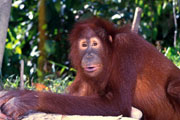Bornean orangutan (Pongo pygmaeus)
Family: Hominidae
Measurements:
Male 60-90 kg
Female 40-50 kg
The name 'orangutan' translates literally from Malay and Bahasa Indonesia as 'person of the forest'. Today, Malaysia, Brunei and Indonesia are the only countries where the beautiful and ecologically-important Bornean orangutan remains.
Biology
Bornean orangutans have long, coarse hair, which can be orange, brown, or even maroon in colour. The males (unlike the closely related Sumatran orangutans) have large, hanging throat pouches and their cheek pads (flanges) are distinctively larger and covered in short bristly hair. Bornean orangutans are highly sexually dimorphic i.e. there are strong differences between the sexes; with the males weighing on average, twice as much as the females and appearing approximately a third larger. They are the largest arboreal mammal on Earth and spend most of their time in the canopy, moving through the forest to forage and feed and make a different nest each night out of branches and foliage. Being largely arboreal, they have evolved long, powerful arms, which may reach over 2 metres in length.
Surviving in the wild to ages between 50-60 years, Bornean orangutans are the slowest breeding terrestrial mammal, with the longest inter-birth interval of approximately eight years. Females typically give birth after reaching fifteen years of age. Infant orangutans spend their first two to three years being carried and remain close to the mother for at least a further three years.
Habitat
The island of Borneo is the third largest in the world and Bornean orangutans can be found across eight regions on the island (Sabah, Kutai, central Borneo, Bukit Raya, Tanjung Puting, Kendawangan, Gunung Palung, and Gunung Nyuit). Where suitable habitat is available orangutans can also be found at low densities. They are most often found in lowland dipterocarp, hilly forests and peat swamp habitats, at altitudes of less than 800 m above sea-level, although they can be found in habitats at 1200 metres.
Dipterocarp habitats are characterized by trees of the family Dipterocarpaceae; where these 'two-winged' fruit trees may attain heights exceeding 80 metres. As well as being primary habitat for orangutans, these forests are highly prized for their timber. These dipterocarp forests have an average annual rainfall between 2000-4500 mm and host 'mast' fruiting events, where almost 90% of the forest tree species may fruit at the same time.
Estimates at the total number of wild Bornean orangutans place the figure at a maximum of around 20,000 individuals, with the highest densities occurring in 'mosaic' habitats such as lowland swamp forests where food availability is high throughout the year. Lower densities are supported by montane, 'hilly' forests. Peat swamps support medium densities of orangutans and they are found in the lowest densities in dipterocarp forest.
Range
There are two species of orangutans and their range is restricted to the islands of Borneo and Sumatra. However, in the Pleistocene era (2.5 million-12,000 years before present) fossil evidence shows that orangutans were found across a wide geographic area, stretching across much of the Indochina region.
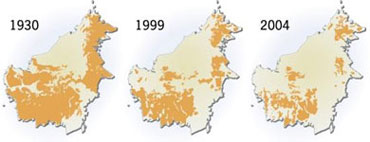
http://maps.grida.no/go/graphic/orangutan-distribution-on-borneo-indonesia-malaysia
Hugo Ahlenius, UNEP/GRID-Arendal
Showing the drastic decline in Bornean orangutan distribution, this chart clearly demonstrates that Asia's great apes are facing an ever-increasing struggle. From the effects of habitat loss through logging and agricultural practices; increasing human encroachment into the forests and; as a result of persecution and collection for the illegal pet trade, orangutans are being forced into smaller and smaller populations.
Photographs kindly provided by David Slater, Nick Bramley, STA


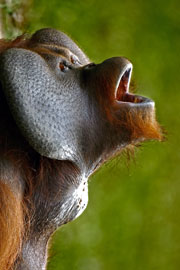
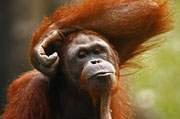
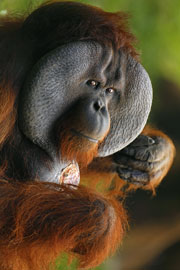
.jpg)
